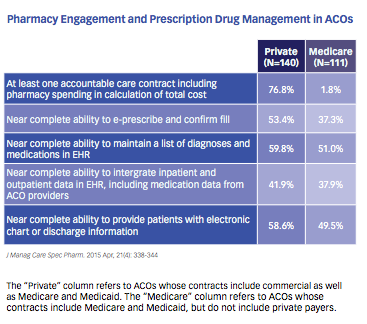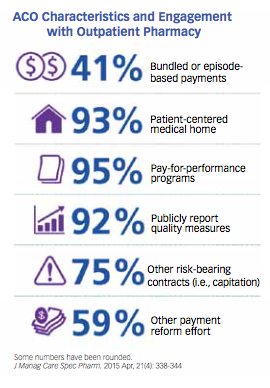New Payment Models: It's Time to Move
Pharmaceutical Executive
Commercial success for pharma brands now demands proactive strategies and interventions
Fundamental changes in the US access and reimbursement landscape are accelerating for the vast majority of public and commercial stakeholders. Often characterized as accountable care organizations (ACOs) or medical homes, these changes are indicative of the larger trend of payers using a variety of payment models to drive an overall behavior change among healthcare professionals and patients. Whether it’s the traditional fee-for-service system which serves as the basis for some new payment models or a new bundled/episodic payment model, pharmaceutical manufacturers need to have a clear line of sight into how each model may impact their specific product portfolios in order to ensure commercial success. As such, the era of simple surveillance is over.
Two-pronged mission
Though data on new payment delivery models are mixed, payers are betting on these new approaches to improve quality and corral costs. The goal of simultaneously improving patient outcomes while also reducing costs is seen as a realistic achievement. Ultimately, pharmaceutical manufacturers need to understand how to navigate the behavior changes brought by various payment

models (see table) by anticipating implications and adjusting commercialization
strategies accordingly.
The inflection point for pharmaceutical manufacturers occurred once drug benefits were included as part of the new payment models in a way they hadn’t been before. Recall that the first wave of CMS-sponsored ACOs excluded drug treatment from the overall program design. Now we are seeing examples such as those from Houston, TX, which saved the municipality an estimated $42 million in healthcare costs over the past three years through the use of ACOs and narrow networks. By pushing to keep city employees to a small ACO and switching to 87% generic drugs, Houston simultaneously promoted wellness overall and reigned in costs.
Cancer pilot study
A recent pilot program conducted by United Healthcare and published in the Journal of Oncology Practice illustrates where the industry is headed through the lens of an oncology bundled payment model. The study, conducted over three years, rewarded physicians for focusing on best treatment practices and health outcomes while simultaneously removing the financial incentives associated with drug acquisition. Data illustrated an overall savings, despite an increase in drug utilization and costs, without compromising quality and outcomes. These successes will add wind to the sails of other initiatives such as WellPoint’s Cancer Quality Care and Cigna’s Collaborative Care which aim to use incentives to engage healthcare professionals and help drive improved health, affordability, and patient experience.
The implementation of these pilots illustrates that even specialty disease categories such as oncology, which once were deemed strictly off limits to new models, are now clearly in play. These new models will be additive to traditional models such as fee-for-service, further illustrating the need to deeply understand unique program design when developing differentiated commercialization

strategies. Consider that the fee-for-service model is in fact the ideal design for immunizations. Physicians are rightly incentivized to immunize more patients because it a) creates an overall healthier population and enhances quality care outcomes and b) aligns to financial goals. The challenge for manufacturers will be to not only surveil the multiple models that exist (see figure), but rather to recognize and act upon how these models will ultimately impact the performance and success of their assets.
Payment models will continue to evolve as payers gather more data and continue to work to improve outcomes while reducing costs. Manufacturers can’t wait for change to slow before reacting and planning as market changes can and do impact patient access to branded treatments and overall utilization patterns. For example, the Affordable Care Act’s Health Insurance Exchange plan models’ bronze, silver, and gold levels all carry with them different formulary structures. Astute manufacturers will not only know where their products fall on formularies for each level of plan, they must (or will) build financial models to ensure appropriate funding for patient assistance and co-pay programs to account for coverage dynamics. The most progressive executives then leverage this data to develop tools and training for field representatives so they can confidently address heathcare professional (HCP) inquiries and build credibility with increasingly sophisticated provider audiences.
Manufacturer musts
It’s a safe bet that payment models will continue to evolve, reimbursement will continue to be a challenge, and medication will continue to play a role in improved outcomes and cost savings. There are clear steps to take to ensure products are positioned to add value regardless of the payment models to ensure patient access, adherence, and quality care outcomes for patients. Manufacturers should therefore:
- Dedicate a strategic imperative within each brand’s business plan to ensure the impact of each of these models on brand performance is well understood and senior management is educated appropriately.
- Invest in the development of educational, promotional, and training resources that provide details on the specific implications of each model.
- Continue to monitor both public and private payers and calibrate activities along the implementation timelines for newer models that are able to deliver concrete results.
In doing so, manufacturers can successfully pivot towards proactive engagement in our new reimbursement reality and sidestep the pitfalls which are sure to ensnarl the passive watchers. The commercial success of your products is what hangs in the balance.
Stacie Heller is Vice President of Xcenda’s Health Policy Practice based in Washington, D.C. She can be reached at Stacie.heller@xcenda.com. Peter Weissberg is a Client Strategist within Xcenda’s Commercial Consulting Practice and chairs of the firm’s ACO Task Force. He can be reached at Peter.Weissberg@xcenda.com.

The Misinformation Maze: Navigating Public Health in the Digital Age
March 11th 2025Jennifer Butler, chief commercial officer of Pleio, discusses misinformation's threat to public health, where patients are turning for trustworthy health information, the industry's pivot to peer-to-patient strategies to educate patients, and more.
Navigating Distrust: Pharma in the Age of Social Media
February 18th 2025Ian Baer, Founder and CEO of Sooth, discusses how the growing distrust in social media will impact industry marketing strategies and the relationships between pharmaceutical companies and the patients they aim to serve. He also explains dark social, how to combat misinformation, closing the trust gap, and more.